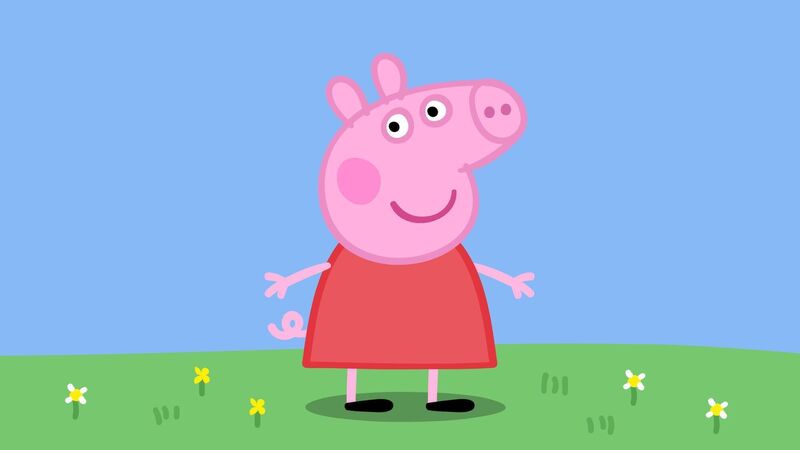Bernard O'Shea: Five things Peppa Pig needs to know about having three siblings in the family

Bernard O'Shea: "This isn’t just a plot development in a cartoon. It’s a psychological earthquake. And Peppa, bless her, is right at the epicentre." Picture: Channel 5/PA Wire.
When the news broke online (with more fanfare than some actual human births), it was revealed that Peppa’s new baby sister was born in the same maternity ward as the royal children. The actual Lindo Wing, where Kate Middleton had her baby.
I thought: “Hang on, what does this mean for George? What does it mean for Peppa? What does it mean for the rest of us who’ve built our parenting routines around a smug pig in a red dress?”
I’ve got three kids myself. I know what’s coming for the Pig family. No more family ticket bundles. Cars that won’t fit them all. One kid who never gets their towel when swimming. And emotional landmines like: “Why did he get more juice?” That’s when I knew I had to write this.
Because if Peppa Pig is now the oldest of three, some harsh truths are waiting in the nappy-scented wings of family life.
At times, urban design, media, and general capitalism all quietly conspired to make “two kids” the model unit — two seats in the back of the car, two children on the hotel deals.
Even Peppa’s original family setup seemed surgically engineered for product placement — one pink, one blue, one mum, one dad. Sorted. Colour-coded. Balanced.
But now, with a third piglet on board — Evie, no less — we’re seeing Peppa’s family rebel against that symmetry. And in doing so, she’s about to join the historic ranks of “eldest of three”.
Birth order theory is one of those things psychologists have been arguing about since Freud first sat someone on a couch and asked: “Tell me about your mother.”
According to Alfred Adler, one of the early giants of psychology, where you sit in the family tree shapes your personality.
If you’re a middle child like George, you’re destined to become a diplomat or secret anarchist. Or both.
Multiple studies (and entire books with big fonts) have tried to pin down the effects of being oldest, middle, youngest, or, God help you, an only child. Firstborns are typically more responsible, anxious, and achievement-oriented.
Middle kids are adaptable, sociable, and very good at negotiating. Youngest children are free-spirited, attention-seeking, and often wildly confident, despite very little evidence to support that confidence.
And here’s where it gets fun: adding a third child doesn’t just change the family dynamic — it rewrites it. George is no longer “the baby.”
He’s now “the one in the middle,” a title that comes with being forever too old for the baby stuff and too young for the responsibilities. It’s like being a human buffer zone.
Peppa, meanwhile, isn’t just “a sibling” anymore. She’s the eldest. The one with expectations. One parent will try the new rules.
The one who’ll be expected to set an example while watching the youngest get away with absolute murder. (Evie will one day be caught chewing the remote, and the family will laugh. When Peppa did it, she was sent to the thinking chair.)
And science agrees: sibling dynamics are fundamental. They affect everything from mental health to job prospects to how you interact with your own kids later in life.
So this isn’t just a plot development in a cartoon. It’s a psychological earthquake. And Peppa, bless her, is right at the epicentre.
If you, like the Pig family, are now rocking a trio of offspring, here are some practical truths and coping strategies I wish someone had handed me in a laminated pamphlet titled: ‘Good Luck, You’re Outnumbered’.
1. Embrace the odd numbers
Cars, hotel rooms, and theme park rides are designed for even-numbered families. You’ll start noticing how many activities come in 2s or 4s. You’ll never fit into a standard “family deal” again. You will forever need the extra chair, the family room, a cot, and a restaurant table that causes the waiter to pause and say, “Let me check something with the kitchen.”
2. Use zones
With three kids, you don’t parent — they run you like a hostile takeover. So create zones. Zones for toys, clothes, and even your emotions. Don’t bring middle-child energy into an eldest-child argument. And definitely don’t bring newborn energy to bedtime.
3. Rotate attention like a Lazy Susan
Try to spend one-on-one time with each kid, even if it’s only 10 minutes.
For the eldest, it might be helping with homework. For the middle one, it might be a whispered chat at bedtime. For the youngest, well, just keeping them alive seems to be enough.
4. Accept the pet child phenomenon.
There’s a strong chance the youngest becomes the “pet”— not because they’re cuter, but because parents are just too tired to parent properly by that stage. “They’re licking the plug socket!” Shrug. “They’ll learn.”
5. Appoint a family historian.
The first child gets a memory box, a photo album, and a lock of hair. The second? A few pics on a hard drive. The third? Nothing but vibes. So appoint one sibling — probably Peppa — to be the family historian. Someone has to remember birthdays, embarrassing stories, and who started the fight over the remote.
So here’s to Peppa. To George. To Evie. And to Mummy and Daddy Pig, who now have to explain why someone has to sit in the middle.
Welcome to the madness.
CONNECT WITH US TODAY
Be the first to know the latest news and updates





